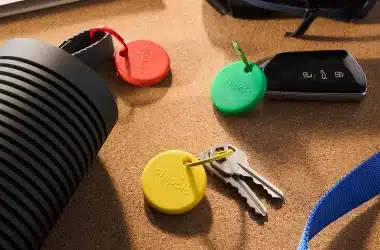Rubber sealants are used in a wide variety of applications, with materials fabricated to suit the particular needs of each use. Both natural and synthetic rubber materials can be found in industries ranging from medicine and energy to fishing and even space exploration. The list below represents just a sampling of the different applications for rubber sealants, many of which fill essential functions of everyday life in the 21st century.
Out of This World
Every manned expedition launched by NASA has required the use of airtight rubber seals to maintain a supply of breathable air inside the capsule. These seals must be manufactured to extreme close tolerances — in other words, there is almost no room for error. The Low Impact Docking System (LIDS) Seal Experiment, which began in 2011, explored different seal materials under consideration for use in upcoming spacecraft missions. The experiment tested 34 samples, including elastomer o-ring, aluminum with a microinch surface finish and Room Temperature Vulcanizing (RTV) adhesive seals.
Natural Rubber
Natural rubber is a latex product drawn from the rubber tree. As a natural product, rubber is formulated of carbon-to-carbon chemical bonds. Rubber is flexible, heat resistant and waterproof, and is widely used in products like cookware, automotive parts and electronics.
Silicone
Silicone is one of the most well-known forms of synthetic rubber. Unlike rubber, silicone bonds are constructed of silicon and oxygen, not carbon. Silicone is also more heat resistant than natural rubber; and because it is an inorganic material, silicone is far less prone to fungus and chemical breakdown. Flexible molds, surgical implants, heat-resistant seals, electrical insulators, gaskets, caulks, and silicon o-rings represent some of the more common uses of silicone rubbers.
Butyl
Butyl is a form of synthetic rubber produced by combining isobutylene with minute amounts of isoprene. It is a durable material commonly used in the medical industry to produce syringe tips, pharmaceutical stoppers and seals, medical packaging and non-woven medical fabrics, such as those worn in surgery. Butyl is also widely used in the automotive industry, for tires, wires and cables and even the exterior body and chassis of many of today’s automobiles.
Epichlorohydrin
Epichlorohydrin is a clear liquid that is mainly used in the production of epoxy resins for paints, plastics and adhesives. Other uses for epichlorohydrin include textiles, paper, inks and dyes, solvents, surfactants. Epichlorohydrin is used in the medical and pharmaceutical industries in the production of synthetic glycerine. Epichlorohydrin can also be found in commercial pesticides as an inactive ingredient.
Fluorocarbon
Fluorocarbon is an umbrella term applied to a broad variety of materials, including organic compounds comprised of carbon, fluorine and chlorine and synthetic hydrocarbons. Fluorocarbons have been used in numerous products, including Freon and Teflon. In recreational and commercial fishing, Fluorocarbon is associated with polyvinylidene difluoride (PVDF) in the form of single-strand fishing lines.
Fluorosilicone
Fluorosilicone is ideal for use in extreme conditions, such as sealing applications for volatile fuels and dealing with harsh chemicals. Like conventional silicone, it is resistant to temperature extremes as well as fungus. However, fluorosilicone is far more durable than conventional silicone. Fluorosilicone is widely used in aerospace and aviation, as well as in the automotive industry for engine seals, gaskets and fuel system connector seals.
Versatility of Rubber Sealants
Whether in the form of natural rubber or synthetic compounds like silicone, rubber seals are widely used in a number of industries, including aviation, medicine and space exploration. The durability of rubber is one of its most valued qualities. Rubber and rubber compounds are also widely used in environments that demand waterproof or airtight seals.






